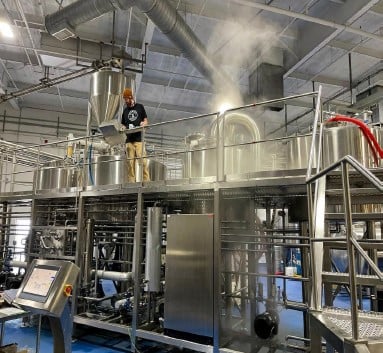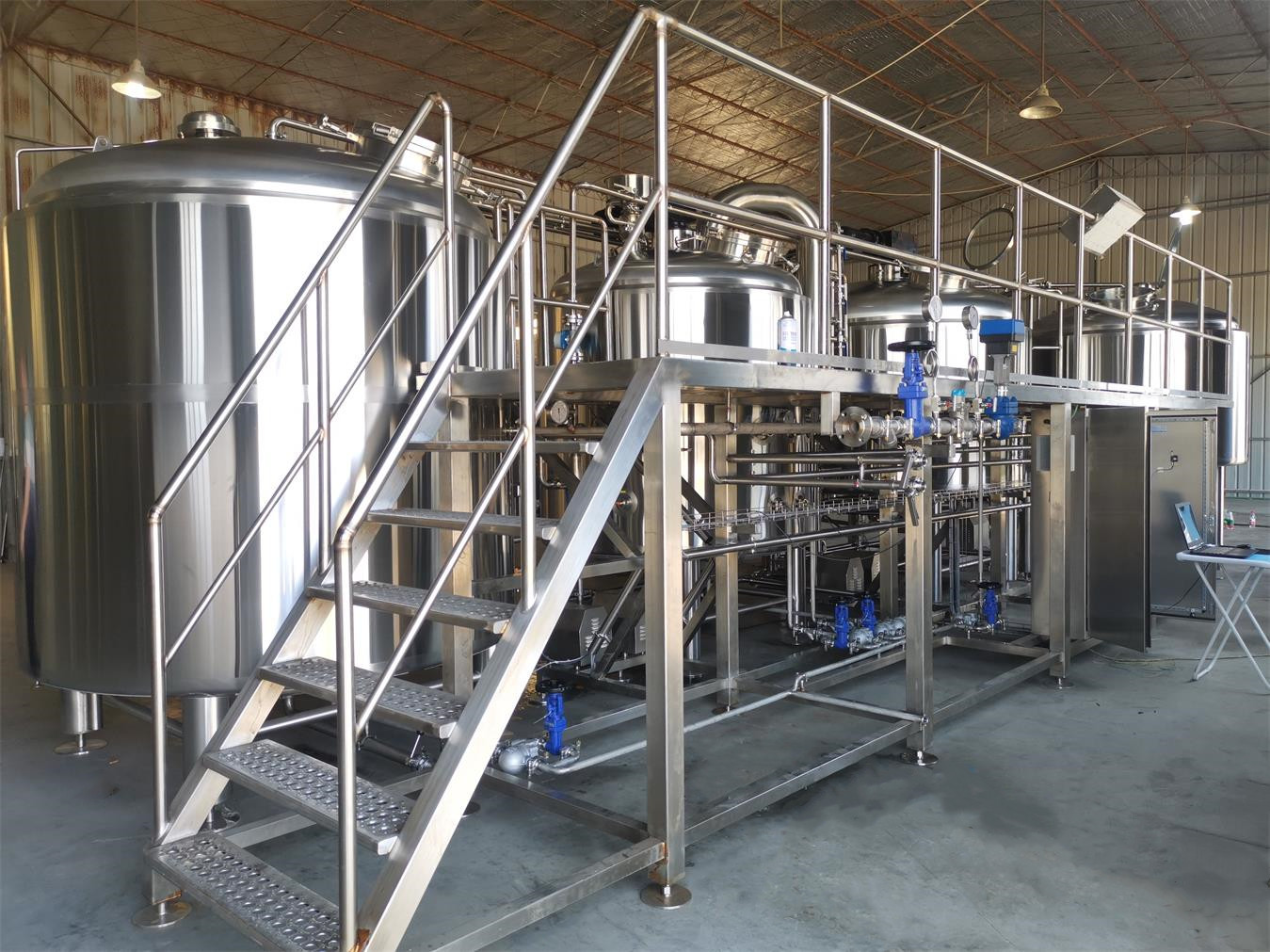The Guide to Buying a Fermentation Tank for Sale
Fermentation tanks are crucial for various industries, including brewing, winemaking, and food processing. If you’re looking to invest in a fermentation tank, you need to understand the various options available, their features, and the overall buying process. This guide provides a comprehensive overview of fermentation tanks, covering everything from equipment types to maintenance, ensuring you make an informed decision.
Overview: Key Details About Fermentation Tanks
Fermentation tanks are specialized containers designed for the fermentation process. They are used in brewing beer, making wine, and fermenting various food products. These tanks come in different sizes, shapes, and materials, tailored to the specific needs of the process they are used for.
Fermentation is a metabolic process that converts sugar to acids, gases, or alcohol. It occurs in yeast and bacteria and also in oxygen-starved muscle cells. Fermentation tanks facilitate this process in a controlled environment, ensuring consistency and quality in the final product.
When considering a fermentation tank, several factors come into play, including the type of fermentation you intend to perform, the capacity required, and the specific features needed. Here’s an in-depth look at the various types of fermentation tanks available:

Types of Fermentation Tanks
| Type | Description |
|---|---|
| Conical Fermenters | These tanks have a conical bottom, which allows for easy separation of yeast and sediment from the liquid. |
| Cylindroconical Tanks | These combine the features of cylindrical and conical tanks, offering both storage and fermentation capabilities. |
| Unitanks | Multi-purpose tanks used for both fermentation and maturation, saving space and cost. |
| Open Fermenters | Traditional tanks used in some brewing processes, allowing for natural yeast activity and easier monitoring. |
| Closed Fermenters | Airtight tanks that prevent contamination and allow for controlled fermentation environments. |
The Brewing Process: Using Fermentation Tanks
The brewing process involves several stages where fermentation tanks play a crucial role. Here’s a detailed look at the brewing process and how fermentation tanks are utilized:
Brewing Process Stages
- Mashing: Grains are mixed with hot water to create a mash, converting starches into fermentable sugars.
- Lautering: The mash is separated into liquid wort and spent grains.
- Boiling: The wort is boiled and hops are added for bitterness, flavor, and aroma.
- Cooling: The wort is cooled to fermentation temperature.
- Fermentation: The cooled wort is transferred to a fermentation tank, where yeast is added to convert sugars into alcohol and carbon dioxide.
- Maturation: The fermented beer is aged to develop flavors.
- Packaging: The beer is packaged into bottles, cans, or kegs for distribution.
Fermentation Tank Capacities, Spaces, Design, and Customization
Choosing the right fermentation tank involves considering its capacity, the space it will occupy, its design, and any customization options. Here’s a breakdown of these factors:
| Capacity | Space | Design | Customization |
|---|---|---|---|
| Small (1-10 barrels) | Ideal for small breweries | Compact design, easy to clean and maintain. | Custom features such as sampling ports, additional valves, and thermowells. |
| Medium (10-30 barrels) | Suitable for mid-sized operations | Versatile design for different brewing styles, available in various shapes (conical, cylindrical). | Customization options for cooling jackets, pressure relief valves, and insulation. |
| Large (30+ barrels) | Best for large-scale production | Advanced design with automated controls, built for high volume production. | Extensive customization including automation systems, advanced cleaning features, and specialized coatings. |
Suppliers and Price Range
Selecting a supplier is a critical step in purchasing a fermentation tank. Prices can vary significantly based on the tank’s capacity, material, and features. Here’s a table summarizing some prominent suppliers and their price ranges:
| Supplier | Price Range | Notable Features |
|---|---|---|
| Blichmann Engineering | $1,000 – $10,000 | High-quality stainless steel tanks, known for durability and precision engineering. |
| Ss Brewtech | $500 – $7,000 | Offers a variety of sizes and features, including temperature control and pressure relief options. |
| Speidel | $1,500 – $15,000 | Renowned for their robust design and ease of use, with a focus on sanitation and efficiency. |
| JVNW (JV Northwest) | $10,000 – $50,000 | Customizable solutions for large-scale operations, with a reputation for high performance and reliability. |
| MoreBeer Pro | $2,000 – $20,000 | Provides a wide range of fermentation tanks, with features suited for both small and large breweries. |
Installation, Operation, and Maintenance
Proper installation, operation, and maintenance are essential for the optimal performance of fermentation tanks. Here’s a detailed look at these aspects:
| Aspect | Details |
|---|---|
| Installation | Ensure the tank is placed on a level surface, properly anchored, and connected to necessary utilities (water, power). Seek professional installation if needed. |
| Operation | Follow the manufacturer’s guidelines for operation. Monitor temperature, pressure, and other critical parameters regularly. |
| Maintenance | Regular cleaning and sanitizing are crucial to prevent contamination. Inspect for any signs of wear or damage and address them promptly. |
How to Choose a Supplier
Selecting the right supplier involves evaluating several factors to ensure you get a quality product that meets your needs. Here’s what to consider:
| Criteria | Considerations |
|---|---|
| Reputation | Look for suppliers with positive reviews and a solid reputation in the industry. |
| Product Range | Ensure they offer a variety of tanks to suit different needs and capacities. |
| Customization Options | Check if they provide customization to meet your specific requirements. |
| Customer Support | Assess the quality of their customer service and technical support. |
| Warranty and After-sales Service | Ensure they offer a good warranty and reliable after-sales service. |
Comparing Pros and Cons: Fermentation Tank Options
To help you make an informed decision, here’s a comparison of the pros and cons of different fermentation tank options:
| Option | Advantages | Limitations |
|---|---|---|
| Conical Fermenters | Easy separation of yeast and sediment, versatile for various fermentation stages. | Higher cost compared to basic tanks, requires more space. |
| Cylindroconical Tanks | Dual-purpose for storage and fermentation, efficient space utilization. | Can be expensive, complex to clean and maintain. |
| Unitanks | Cost-effective, saves space, and simplifies the brewing process. | May not offer the same level of control as specialized tanks. |
| Open Fermenters | Ideal for traditional brewing methods, allows for natural yeast activity. | Higher risk of contamination, requires more monitoring. |
| Closed Fermenters | Prevents contamination, offers controlled fermentation environments. | Limited visibility of the fermentation process, can be more expensive. |

FAQs
| Question | Answer |
|---|---|
| What size fermentation tank do I need? | The size depends on your production scale. Small breweries may need 1-10 barrels, while large ones need 30+ barrels. |
| What material is best for fermentation tanks? | Stainless steel is the most popular due to its durability, ease of cleaning, and resistance to corrosion. |
| How do I maintain a fermentation tank? | Regular cleaning and sanitizing, monitoring for wear and damage, and following the manufacturer’s maintenance guidelines. |
| Can I customize my fermentation tank? | Yes, many suppliers offer customization options to meet specific needs, including size, features, and controls. |
| What are the benefits of conical fermenters? | They allow easy separation of yeast and sediment, can be used for various fermentation stages, and provide efficient space utilization. |
Share this entry
Interested in learning more about Brewing Systems including additional details and pricing information? Please use the form below to contact us!
YOLONG BREWERY EQUIPMENT FAQS
- Commercial Brewery / Craft Brewery / Microbrewery / Nanobrewery
- What is The Difference Between Craft Beer and Industrial Beer?
- The Bespoke Differences In Custom Brewing Systems
- Everything You Need to Know About Kettle Souring
- How to Choose Brewing Equipment for Your business?
- How To Choose The-Best Partner To Build Your Commercial Microbrewing System?
- Two Detection Sensors That You Need To Use In Your Brewhouse System
- Remote Control Applications in Brewing Equipment/How does it work?
- How To Clean Your Brand New Brewery Tanks?

